Just after 3 years, I'm back on repair attempt for this box...
Disclaimer
Real RF engineers likely to get lot of facepalms out of this thread, so if I'm going to do something wrong - feel free to point out. I mostly play in DC domain with 3458A's and calibrators, so lots to learn about RF basics still. I'm no guest to high-speed digital design stuff though, so hopefully will not make too much broken hardware...
Okay, back to generator.
It does power on, but error out right away, saying that A11 reference loop is unlocked. Some of the frequencies seem to work fine however, and amplitude is correct at the output.
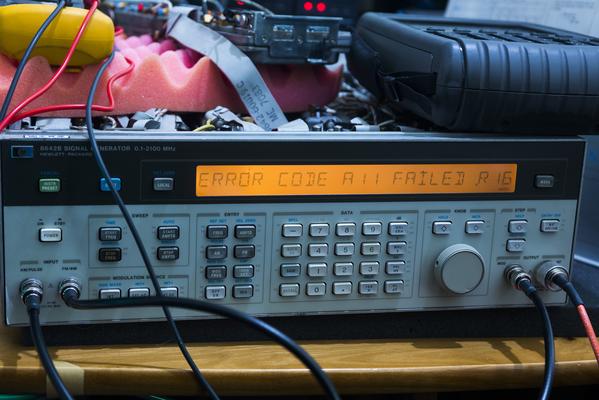
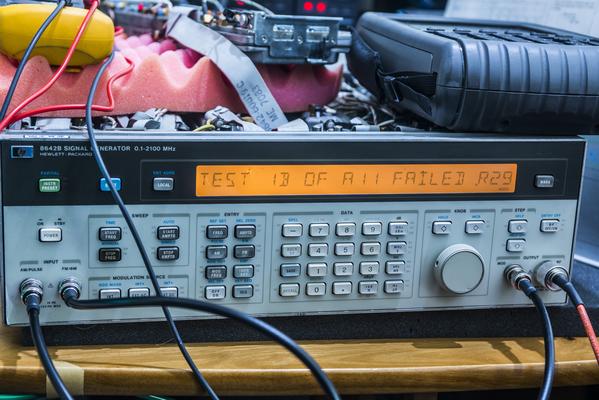
After weekend of troubleshooting, I've confirmed that SAWR A7 assembly is OK, FM loop is OK. These are the inputs of the reference loop assembly A11. Power rails +5/-5V, +15/-15V and +50VDC also confirmed all good, no easy get-away repairs on this one.
I have bought (actually twice, lol) a set of service manuals for 8642B from great and mighty
ArtekManuals, highly recommend if you looking for HP and other manuals. So let's look at the A11 block diagram:
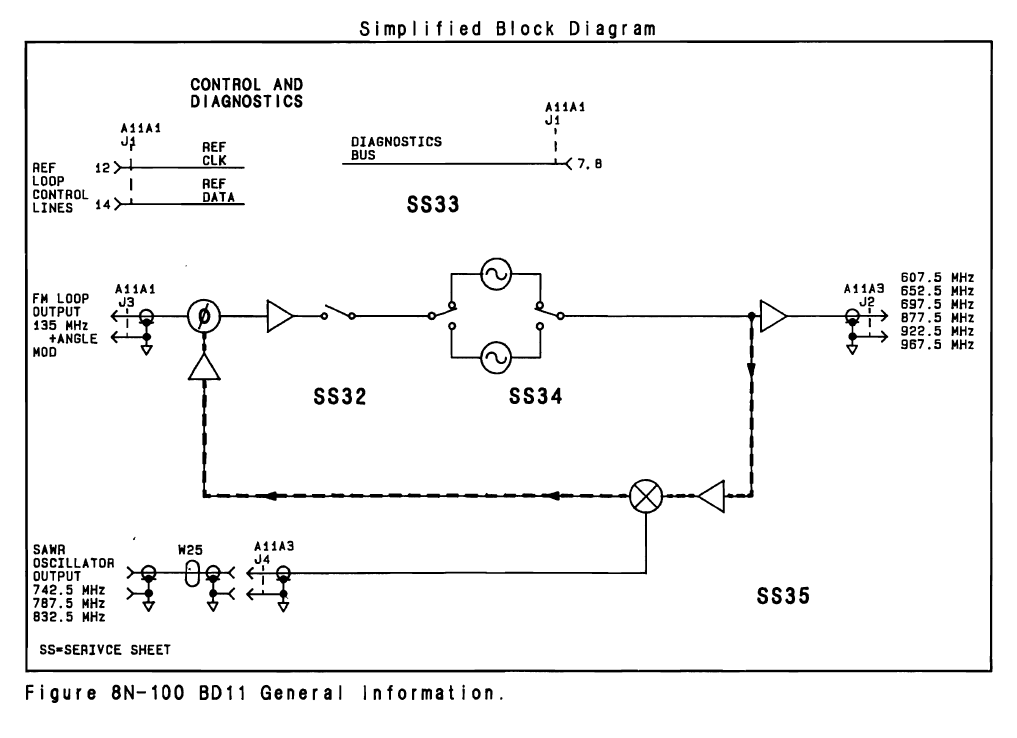
A11 takes 135MHz from FM board, one of three signals from SAWR oscillator board and generate one of the six possible frequencies at the output.
Module block SS32 is phase detector, diagnostic circuits and filters that will look at incoming signals and generate tune DC voltage to tune VCO block SS34. Here's VCO in question:
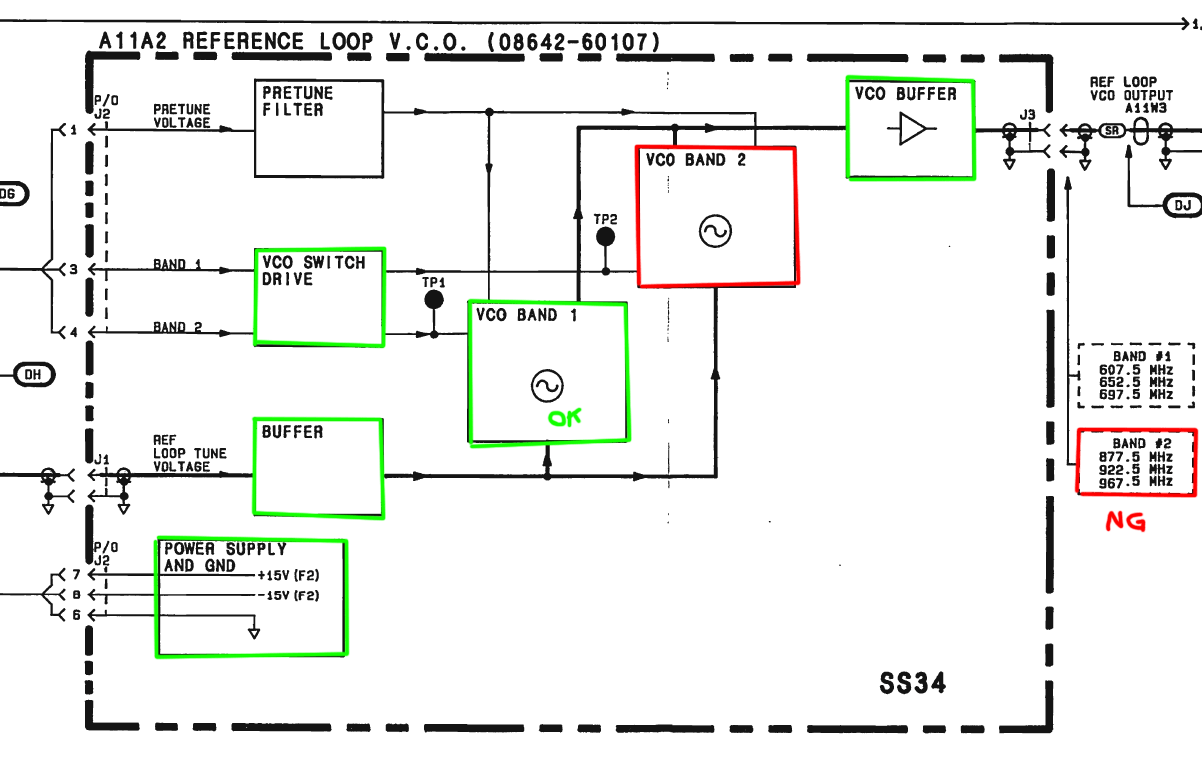
Green blocks I tested and they seem to be happily working, at least I couldn't find anything wrong. BAND1/BAND2 selects which VCO will receive power and begin operating. When generator programmed to use BAND1 I can detect and see stable RF signal before and after the VCO buffer, using my freshly received spectrum analyzer.
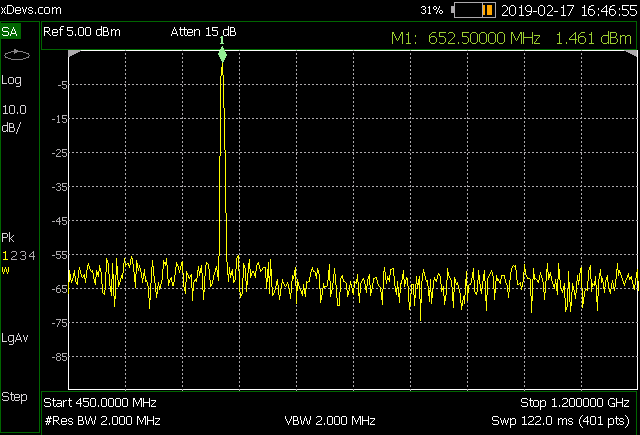
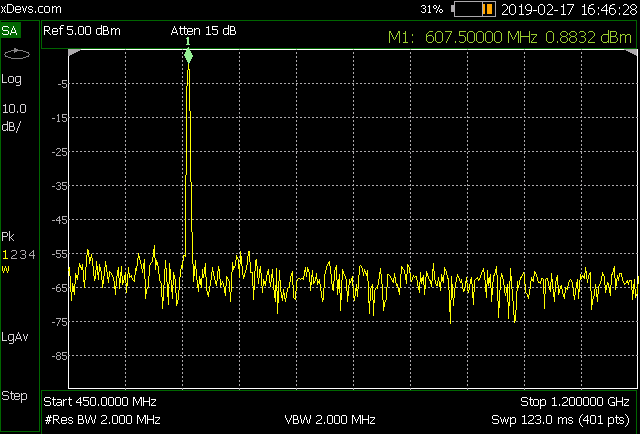
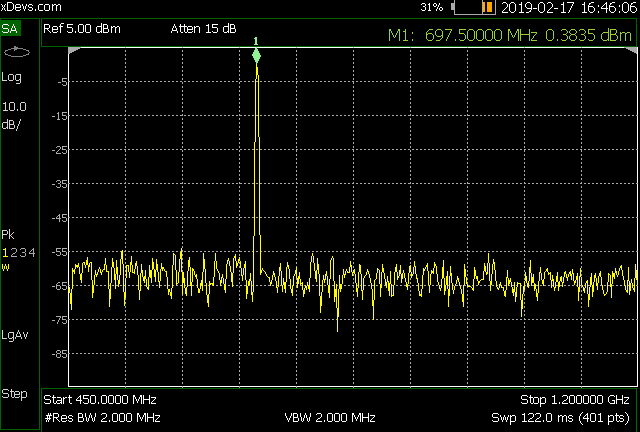
However when I get any frequency programmed to use VCO Band 2, i get some crap out instead of clean tone:
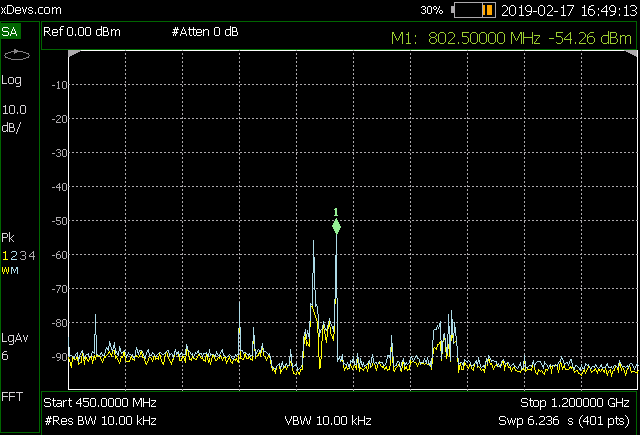
Here's the module itself:
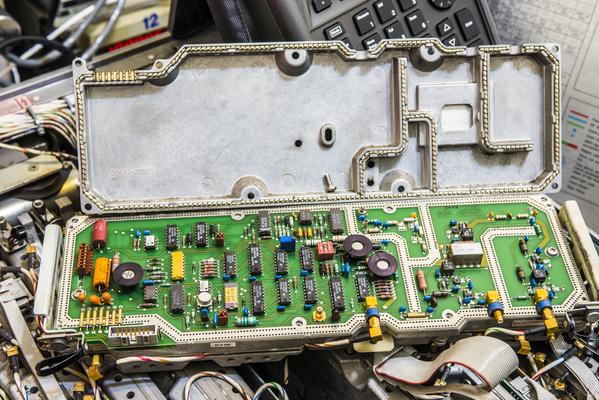
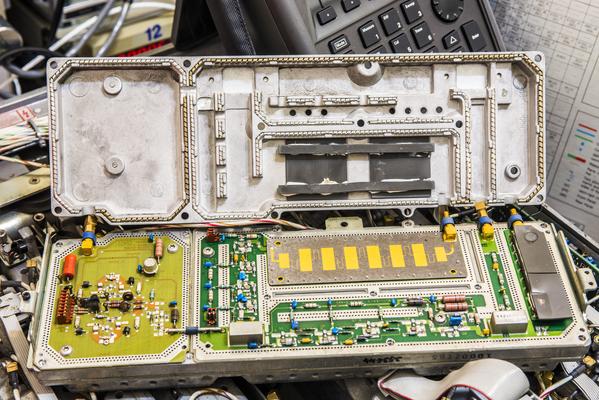
VCO module PCBA in question:
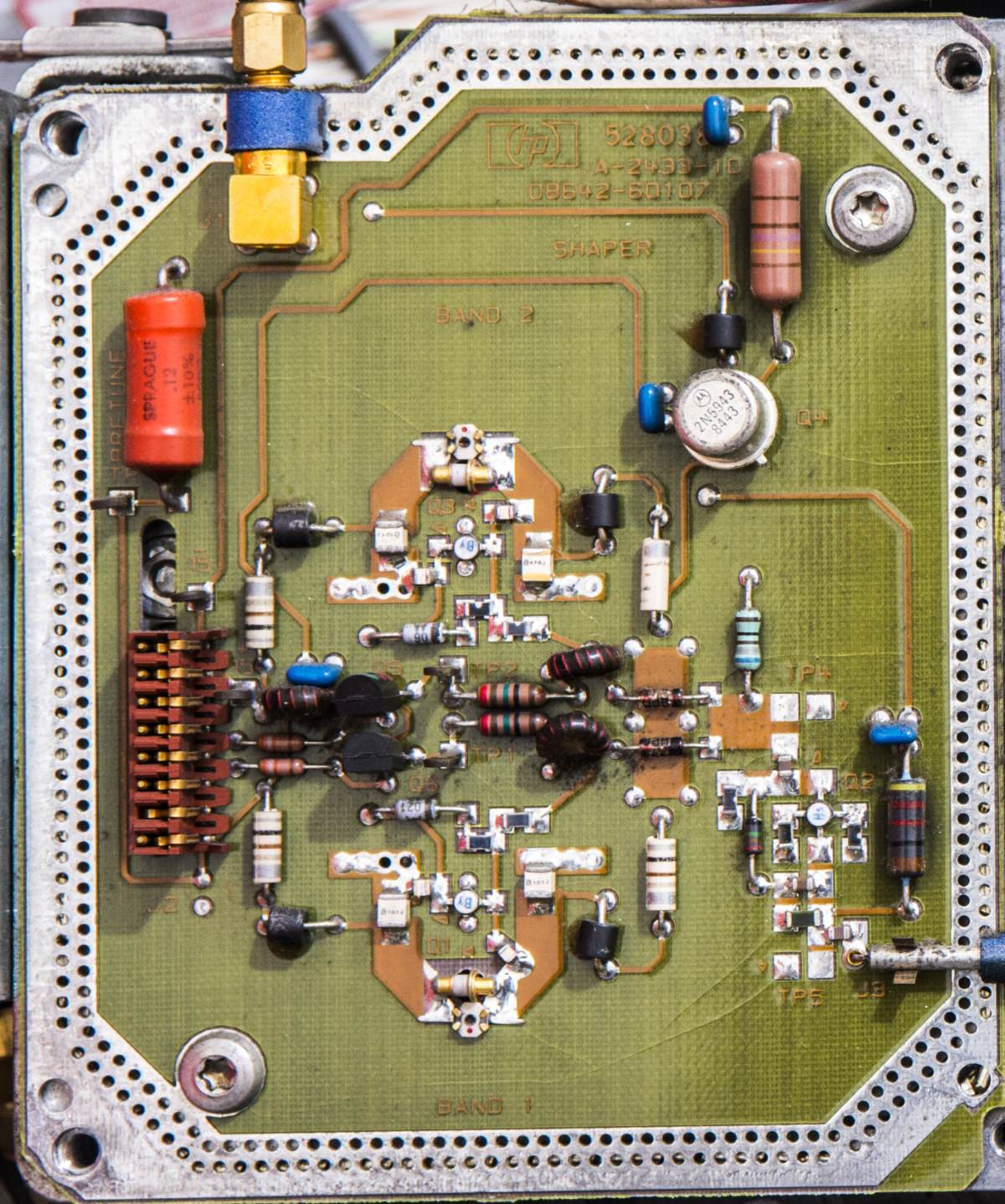
I don't have any RF parts to try, so didn't come with any better idea than to swap RF NPN transistors between each of the VCO. Hopefully I can see issue to follow the transistor? All resistors and zeners checked out okay.